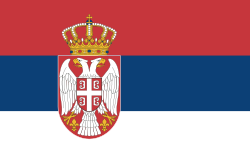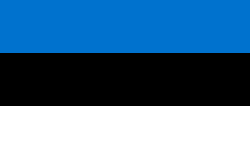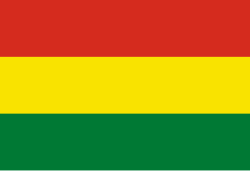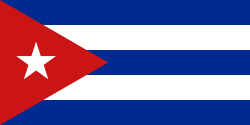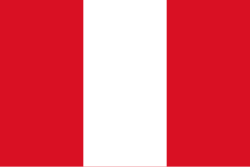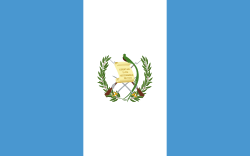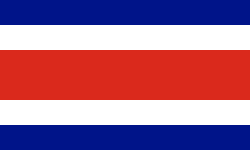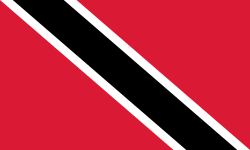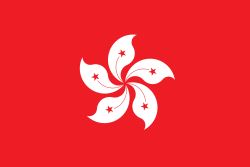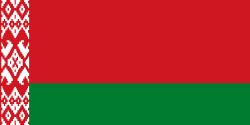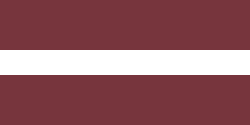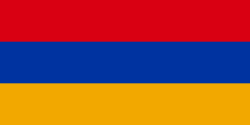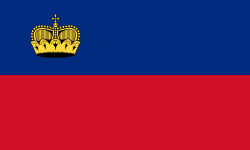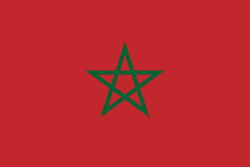Fed Cup 2010
| Fed Cup 2010 | |
|---|---|
| Datum | 6. února – 7. listopadu 2010 |
| Ročník | 48. |
| Finálové utkání | |
| Vítěz | |
| Výsledek | 3–1 |
| Místo | San Diego, USA |
| Povrch | tvrdý / hala |
| Fed Cup | |
< 2009 2011 > | |
Fed Cup 2010 byl 48. ročníkem nejdůležitější týmové soutěže žen v tenise. Finálové utkání se uskutečnilo 6.-7. listopadu 2010 v americkém San Diegu, kde domácí tým USA podlehl Italkám 1–3, které tak titul obhájily.
Světová skupina 2010
| Účastníci Světové skupiny 2010 | |||
Česko | Francie | Itálie | Německo |
|---|---|---|---|
Rusko | Spojené státy | Srbsko | Ukrajina |
Pavouk
| Čtvrtfinále 6. - 7. února | Semifinále 24. - 25. dubna | Finále 6. - 7. listopadu | |||||||||||||
| Ukrajina, Charkov | |||||||||||||||
| 1 | | 4 | |||||||||||||
| | 1 | Itálie, Řím | |||||||||||||
| 1 | | 5 | |||||||||||||
| Česko, Brno | 4 | | 0 | ||||||||||||
| 4 | | 3 | |||||||||||||
| | 2 | USA, San Diego | |||||||||||||
| 1 | | 3 | |||||||||||||
| Srbsko, Bělehrad | 2 | 1 | |||||||||||||
| | 2 | ||||||||||||||
| 3 | | 3 | USA, Birmingham, Alabama | ||||||||||||
| 3 | | 2 | |||||||||||||
| Francie, Lievin | 2 | ' | 3 | ||||||||||||
| | 1 | ||||||||||||||
| 2 | ' | 4 | |||||||||||||
Finále
| Spojené státy americké | 1 : | 3 | Itálie | |||||||||||||||||||||||||||||||||||||||||||||||||||||||||||||||||||||||||||||||||||||||||
|---|---|---|---|---|---|---|---|---|---|---|---|---|---|---|---|---|---|---|---|---|---|---|---|---|---|---|---|---|---|---|---|---|---|---|---|---|---|---|---|---|---|---|---|---|---|---|---|---|---|---|---|---|---|---|---|---|---|---|---|---|---|---|---|---|---|---|---|---|---|---|---|---|---|---|---|---|---|---|---|---|---|---|---|---|---|---|---|---|---|---|---|---|
| Spojené státy americké, San Diego 6.- 7. listopadu 2010 tvrdý (Premiere Court) – hala | ||||||||||||||||||||||||||||||||||||||||||||||||||||||||||||||||||||||||||||||||||||||||||||
| ||||||||||||||||||||||||||||||||||||||||||||||||||||||||||||||||||||||||||||||||||||||||||||
Baráž Světové skupiny
Čtyři týmy, které prohrály ve Světové skupině v 1. kole (Ukrajina, Francie, Německo a Srbsko) a 4 vítězné týmy ze Světové skupiny II (Slovensko, Belgie, Austrálie a Estonsko) se utkaly v baráži o Světovou skupinu.
| Baráž Světové skupiny 24. a 25. dubna | ||||
|---|---|---|---|---|
| Místo konání | Povrch | Domácí | Výsledek | Hosté |
| Hasselt, Belgie | antuka (h) | 3–2 | ||
| Charkov, Ukrajina | antuka (h) | 5–0 | ||
| Frankfurt, Německo | antuka | 3–2 | ||
| Bělehrad, Srbsko | antuka (h) | 3–2 | ||
- Austrálie, Belgie a Slovensko postoupily do Světové skupiny pro rok 2011.
- Francie zůstala ve Světové skupině pro rok 2011.
- Estonsko zůstalo ve Světové skupině II pro rok 2011.
- Německo, Srbsko a Ukrajina sestoupily do Světové skupiny II pro rok 2011.
Světová skupina II
| Světová skupina II – 6. a 7. února | ||||
|---|---|---|---|---|
| Místo konání | Povrch | Domácí | Výsledek | Hosté |
| Adelaide, Austrálie | tvrdý | 3–2 | ||
| Bydgoszcz, Polsko | koberec (h) | 3–2 | ||
| Tallinn, Estonsko | tvrdý (h) | 4–1 | ||
| Bratislava, Slovensko | tvrdý (h) | 3–2 | ||
Světová skupina II Baráž
Čtyři týmy, které prohrály ve Světové skupině II (Španělsko, Polsko, Argentina a Čína) hrály baráž proti týmům, které se kvalifikovaly z 1. skupin oblastních zón. Dva týmy se kvalifikovaly z evropsko-africké zóny (Švédsko a Slovinsko), jeden z asijsko-oceánské zóny (Japonsko) a jeden tým z americké zóny (Kanada).
| Baráž Světové skupiny II – 24. a 25. dubna | ||||
|---|---|---|---|---|
| Místo konání | Povrch | Domácí | Výsledek | Hosté |
| Sopoty, Polsko | koberec (h) | 4–1 | ||
| Helsingborg, Švédsko | tvrdý (h) | 3–2 | ||
| Montreal, Kanada | koberec (h) | 5–0 | ||
| Maribor, Slovinsko | antuka (h) | 4–1 | ||
- Švédsko, Slovinsko a Kanada postoupily do Světové skupiny II pro rok 2011.
- Španělsko zůstalo ve Světové skupině II pro rok 2011.
- Japonsko zůstalo v asijsko-oceánské zóně pro rok 2011.
- Polsko, Argentina a Čína sestoupily do oblastních zón pro rok 2011.
Americká Zóna
1. skupina
- 1.
 Kanada — postup do baráže Světové skupiny II
Kanada — postup do baráže Světové skupiny II - 2.
 Kolumbie
Kolumbie - 3.
 Paraguay
Paraguay - 4.
 Brazílie
Brazílie - 5.
 Chile
Chile - 5.
 Bolívie
Bolívie - 7.
 Kuba — sestup do 2. skupiny pro rok 2011
Kuba — sestup do 2. skupiny pro rok 2011 - 7.
 Portoriko — sestup do 2. skupiny pro rok 2011
Portoriko — sestup do 2. skupiny pro rok 2011
2. skupina
 Mexiko — postup do 1. skupiny pro rok 2011
Mexiko — postup do 1. skupiny pro rok 2011 Peru — postup do 1. skupiny pro rok 2011
Peru — postup do 1. skupiny pro rok 2011 Bahamy
Bahamy Bermudy
Bermudy Dominikánská republika
Dominikánská republika Ekvádor
Ekvádor Guatemala
Guatemala Honduras
Honduras Jamajka
Jamajka Kostarika
Kostarika Panama
Panama Trinidad a Tobago
Trinidad a Tobago
Zóna Asie a Oceánie
1. skupina
- 1.
 Japonsko — postup do baráže Světové skupiny II
Japonsko — postup do baráže Světové skupiny II - 2.
 Tchaj-wan
Tchaj-wan - 3.
 Kazachstán
Kazachstán - 4.
 Jižní Korea
Jižní Korea - 5.
 Nový Zéland
Nový Zéland - 6.
 Thajsko
Thajsko - 7.
 Uzbekistán
Uzbekistán - 8.
 Indonésie — sestup do 2. skupiny pro rok 2011
Indonésie — sestup do 2. skupiny pro rok 2011
2. skupina
- 1.
 Indie — postup do 1. skupiny pro rok 2011
Indie — postup do 1. skupiny pro rok 2011 - 2.
 Kyrgyzstán
Kyrgyzstán - 3.
 Hongkong
Hongkong - 4.
 Malajsie
Malajsie - 5.
 Singapur
Singapur - 6.
 Filipíny
Filipíny - 7.
 Sýrie
Sýrie
Zóna Evropy a Afriky
1. skupina
- 1.
 Švédsko a
Švédsko a  Slovinsko — postup do baráže Světové skupiny II
Slovinsko — postup do baráže Světové skupiny II - 3.
 Rakousko a
Rakousko a  Švýcarsko
Švýcarsko - 5.
 Nizozemsko a
Nizozemsko a  Rumunsko
Rumunsko - 7.
 Velká Británie a
Velká Británie a  Maďarsko
Maďarsko - 9.
 Izrael a
Izrael a  Bělorusko
Bělorusko - 11.
 Dánsko a
Dánsko a  Chorvatsko
Chorvatsko - 13.
 Bulharsko a
Bulharsko a  Lotyšsko
Lotyšsko - 15.
 Portugalsko a
Portugalsko a  Bosna a Hercegovina — sestup do 2. skupiny pro rok 2011
Bosna a Hercegovina — sestup do 2. skupiny pro rok 2011
2. skupina
3. skupina
 Maroko — postup do 2. skupiny pro rok 2011
Maroko — postup do 2. skupiny pro rok 2011 Turecko — postup do 2. skupiny pro rok 2011
Turecko — postup do 2. skupiny pro rok 2011 Alžírsko
Alžírsko Egypt
Egypt Irsko
Irsko Malta
Malta Moldávie
Moldávie
Externí odkazy
- (anglicky) Oficiální stránky Fed Cupu Archivováno 7. 10. 2010 na Wayback Machine.
Média použitá na této stránce
Vlajka České republiky. Podoba státní vlajky České republiky je definována zákonem České národní rady č. 3/1993 Sb., o státních symbolech České republiky, přijatým 17. prosince 1992 a který nabyl účinnosti 1. ledna 1993, kdy rozdělením České a Slovenské Federativní republiky vznikla samostatná Česká republika. Vlajka je popsána v § 4 takto: „Státní vlajka České republiky se skládá z horního pruhu bílého a dolního pruhu červeného, mezi něž je vsunut žerďový modrý klín do poloviny délky vlajky. Poměr šířky k její délce je 2 : 3.“
This is the national flag of Belgium, according to the Official Guide to Belgian Protocol. It has a 13:15 aspect ratio, though it is rarely seen in this ratio.
Its colours are defined as Pantone black, Pantone yellow 115, and Pantone red 032; also given as CMYK 0,0,0,100; 0,8.5,79,0; and 0,94,87,0.Flag of Australia, when congruence with this colour chart is required (i.e. when a "less bright" version is needed).
See Flag of Australia.svg for main file information.Flag of Canada introduced in 1965, using Pantone colors. This design replaced the Canadian Red Ensign design.
Při zobrazení tohoto souboru lze snadno přidat orámování
| Flag of Bolivia* | |
|---|---|
| country | Template:I18n/Republic of Bolivia |
| used by | Bolivia |
| from | 1851 |
| until | Present |
| created by | Government of Bolivia |
| format | 15:22 |
| shape | rectangular |
| colours | červená, žlutá, zelená
flag has 3 horizontal stripes |
| other characteristics | A horizontal tricolor of red, yellow and green. |
The flag of the Dominican Republic has a centered white cross that extends to the edges. This emblem is similar to the flag design and shows a bible, a cross of gold and 6 Dominican flags. There are branches of olive and palm around the shield and above on the ribbon is the motto "Dios,Patria!, Libertad" ("God, Country, Freedom") and to amiable freedom. The blue is said to stand for liberty, red for the fire and blood of the independence struggle and the white cross symbolized that God has not forgotten his people. "Republica Dominicana". The Dominican flag was designed by Juan Pablo Duarte, father of the national Independence of Dominican Republic. The first dominican flag was sewn by a young lady named Concepción Bona, who lived across the street of El Baluarte, monument where the patriots gathered to fight for the independence, the night of February 27th, 1844. Concepción Bona was helped by her first cousin María de Jesús Pina.
The flag of the Dominican Republic has a centered white cross that extends to the edges. This emblem is similar to the flag design and shows a bible, a cross of gold and 6 Dominican flags. There are branches of olive and palm around the shield and above on the ribbon is the motto "Dios,Patria!, Libertad" ("God, Country, Freedom") and to amiable freedom. The blue is said to stand for liberty, red for the fire and blood of the independence struggle and the white cross symbolized that God has not forgotten his people. "Republica Dominicana". The Dominican flag was designed by Juan Pablo Duarte, father of the national Independence of Dominican Republic. The first dominican flag was sewn by a young lady named Concepción Bona, who lived across the street of El Baluarte, monument where the patriots gathered to fight for the independence, the night of February 27th, 1844. Concepción Bona was helped by her first cousin María de Jesús Pina.
Flag of Jamaica. “The sunshine, the land is green, and the people are strong and bold” is the symbolism of the colours of the flag. GOLD represents the natural wealth and beauty of sunlight; GREEN represents hope and agricultural resources; BLACK represents the strength and creativity of the people. The original symbolism, however, was "Hardships there are, but the land is green, and the sun shineth", where BLACK represented the hardships being faced.
Chinese Taipei Olympic Flag. According to the official website of Chinese Taipei Olympic Committee, Blue Sky(circle) & White Sun(triangles) above the Olympic rings is neither the National Emblem of the Republic of China, nor the Party Emblem of Kuomintang (KMT), but a design in between, where the triangles do not extend to the edge of the blue circle, as registered at International Olympic Committee in 1981 and digitally rendered in 2013. Besides, the blue outline of the five-petaled plum blossom is broader than the red one. Moreover, the CMYK code of the blue one and the Blue Sky & White Sun is "C100-M100-Y0-K0", and different from the Olympic rings (C100-M25-Y0-K0). Note that it's the only version recognized by IOC.
The national flag of Kingdom of Thailand; there are total of 3 colours:
- Red represents the blood spilt to protect Thailand’s independence and often more simply described as representing the nation.
- White represents the religion of Buddhism, the predominant religion of the nation
- Blue represents the monarchy of the nation, which is recognised as the centre of Thai hearts.
bendera Indonesia
Při zobrazení tohoto souboru lze snadno přidat orámování
Flag of Portugal, created by Columbano Bordalo Pinheiro (1857-1929), officially adopted by Portuguese government in June 30th 1911 (in use since about November 1910).
Finská vlajka
Georgian flag in Pantone MS.
Used color: National flag | South African Government and Pantone Color Picker
| zelená | rendered as RGB 0 119 73 | Pantone 3415 C |
| žlutá | rendered as RGB 255 184 28 | Pantone 1235 C |
| červená | rendered as RGB 224 60 49 | Pantone 179 C |
| modrá | rendered as RGB 0 20 137 | Pantone Reflex Blue C |
| bílá | rendered as RGB 255 255 255 | |
| černá | rendered as RGB 0 0 0 |
Flag of Liechtenstein
Zelený pruh má znázorňovat většinové katolické obyvatelsto Irska, oranžový pruh reprezentuje protestantskou menšinu a bílý pruh uprostřed znázorňuje mír a harmonii mezi nimi.
Flag of Syria. Originally flag of the Syria Revolution (from 2011), de facto flag of Syria beginning December 2024, official beginning March 2025.






